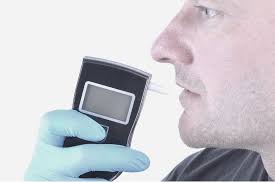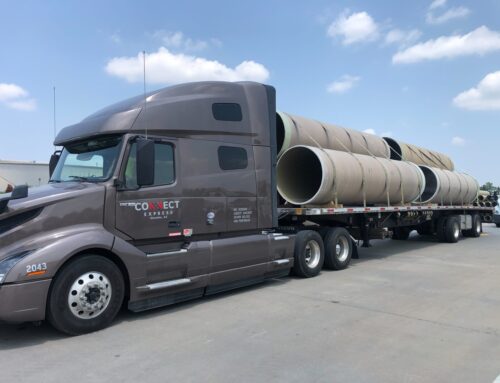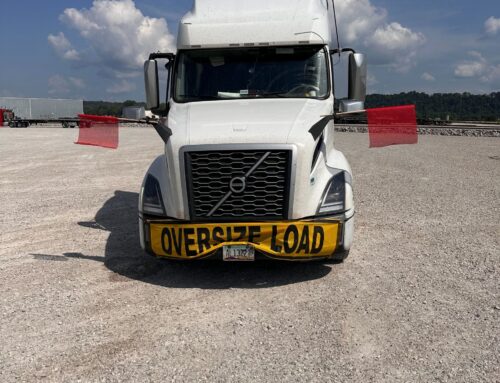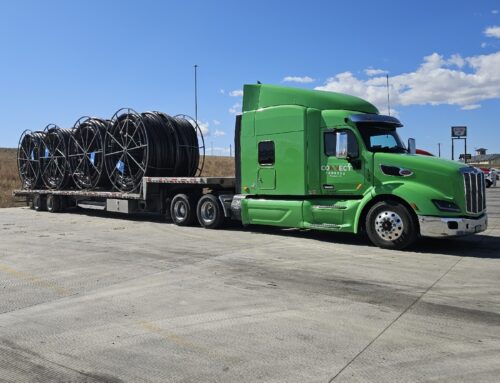
It’s a common reaction among professionals in the flatbed trucking industry, where rigorous scrutiny is part and parcel of the operational landscape. Regardless, the key to navigating these audits lies in ardent preparation and attention to detail, turning a potential ordeal into a showcase of your company’s compliance and proficiency. Indeed, with the right approach, a DOT audit need not be a harbinger of stress, but rather an opportunity to demonstrate the robustness of your regulatory adherence.
Documentation Best Practices
Documentation integrity is the bedrock of a seamless DOT audit experience. Ensuring all records are meticulously organized, up to date, and error-free paves the way for straightforward inspections. Maintaining a separate and logically structured record system specifically for DOT-related documents circumvents any unnecessary entanglements with non-relevant materials. Any amendments or corrections to these documents need to be made in real time, adhering strictly to compliance guidelines, so that they reflect the most accurate and current information at any given time—an indispensable practice to fortify your audit readiness.
Separating DOT Records
Precise record-keeping is the fulcrum of DOT compliance, minimizing the margin for error and enforced penalties. Segregation of DOT-specific documentation is not just recommended but essential.
The intersection of medical and DOT records is fraught with confidentiality concerns and potential compliance breaches. Therefore, adhering to a dedicated storage system for DOT records ensures clarity and streamlined audit procedures.
DOT-compliant record separation safeguards against inadvertent privacy leaks and regulatory infractions.
When every DOT-related document is meticulously sorted and promptly updated, you instill confidence during audits. This discipline underscores your commitment to compliance and preempts any regulatory scrutiny that could arise from disorganized record-keeping practices.
Daily Review of Testing Forms
A rigorous routine necessitates discipline.
Meticulous inspection of Breath Alcohol Test (BAT) and Custody and Control Form (CCF) documents inherently bolsters compliance integrity. By scrutinizing these forms daily, you preempt the likelihood of oversights and inaccuracies, ensuring that each record stands up to the stringent demands of a DOT audit. Single out and correct any discrepancies before they culminate into significant issues.
Accuracy in documentation is non-negotiable.
A consistent daily review serves a dual purpose – it not only enhances the quality of records but also ingrains a culture of diligence within your operation. A practitioner’s keen eye is pivotal in detecting errors that could otherwise derail an audit.
Stay ahead with systemized preemptive checks.
Proactivity in this realm is a strategic safeguard against noncompliance. Prior to filing, verify that forms completed on the previous day align with DOT protocols, ironing out even the most minor of inconsistencies.
End your day with a final protocol compliance check.
A daily closing routine, which includes reviewing testing forms, ensures that your DOT records are perpetually in an audit-ready state. Given the dynamic nature of DOT regulations, remaining agile and updated with best practices is critical—this includes the meticulous sifting through daily documentation and preparing for any changes post the Automatic Identification System (AIS) deadline. This final step fortifies readiness and reinforces the importance of diligent record-keeping practices within your team.
Pre-Audit Preparedness

Proper organization and early preparation are the lynchpins of a successful DOT audit. Meticulously maintained and categorized records, clearly labeled and segregated by the type and date, establish a robust framework, enabling swift and accurate retrieval of information in an audit scenario. Adopting a regimented process of record examination and correction ensures records are pristine, warding off potential audit pitfalls.
Embrace the principle of perpetual preparedness; it is the cornerstone of audit readiness. Equip your team with comprehensive knowledge of DOT protocols, ensuring that their training and certificates are continuously updated and readily accessible. Cultivate a culture of constant vigilance that does not falter between audits, but instead functions seamlessly as part of day-to-day operations.
Proactive Documentation Organization
The substrate of a successful DOT audit hinges on organized, readily accessible documentation—this is non-negotiable. Secure a methodical system that segregates DOT records, thereby enhancing navigability and reducing auditor search time. A well-organized record system signifies meticulous operations and a committed adherence to DOT standards.
Strive for flawlessness in your documentation regimen. Regularly review and update all records to ensure they reflect the current procedures and comply with regulations. Implement a habit of daily checks to catch and rectify errors before they escalate into non-compliance issues.
The granularity of record-keeping cannot be overstated; detailed logs highlight diligence and operational integrity. Ensure that all documentation—be it training verifications, collection logs, or test results—undergoes stringent scrutiny. This attentiveness to detail stands as a bulwark against discrepancies that could be leveraged against your organization during an audit.
Instituting an internal structure for document oversight is paramount. Assign dedicated personnel to manage record-keeping, imposing a hierarchy of checks and balances. This ensures that no single point of failure jeopardizes the completeness and accuracy of your records. Their role also encompasses educating the workforce on the importance of documentation, cultivating a unified front that treats record integrity as sacrosanct. In this ecosystem, “just in time” preparation is obsolete—replaced by a culture of continuous, meticulous documentation management.
Creating a Welcoming Auditor Workspace

When anticipating a DOT audit, creating a conducive environment for the auditor is critical. A well-organized, quiet workspace with necessary resources can set a positive tone for the proceedings. This thoughtful preparation can facilitate a smoother, more efficient audit process.
Ensure the space is clean and well-lit. A comfortable seating arrangement and desk space are essential for prolonged periods of work.
Moreover, provide access to electrical outlets for laptops and other devices, ensuring that auditors can use their equipment without interruption. Positioning this space within reach of a network connection could be immensely beneficial.
Keep relevant records and documentation within arm’s reach of the workspace, neatly sorted and readily accessible. This demonstrates both preparedness and a willingness to facilitate the auditor’s task.
Additionally, having basic office supplies, such as pens, highlighters, and paper, available can prevent unnecessary disruptions. Providing these small conveniences reflects an understanding of the auditor’s needs and a proactive approach to the audit.
Lastly, ensure that your staff is aware of the auditor’s presence and respects their need for concentration. Restrict interruptions and noise around the audit space, creating a tranquil atmosphere conducive to focused work.
Quality Assurance Mastery
In the realm of Flatbed trucking, quality assurance (QA) is the backbone of operational integrity, underpinning the safety and compliance aspects that are closely scrutinized by DOT audits. A well-implemented QA program not only ensures adherence to regulations but also demonstrates a company’s commitment to maintaining the highest standards of service. Thorough documentation of procedures and their outcomes, articulated in a clear and accessible manner, exemplifies a masterful grasp of quality assurance protocols.
Developing a robust system for regular internal reviews and simulations of DOT audit scenarios is vital in reinforcing QA procedures. By conducting periodic self-audits, a company can identify any discrepancies or areas for improvement prior to an external audit. It’s important that these internal reviews simulate the auditor’s approach, scrutinizing every facet of your operations with the same meticulous attention to detail that a DOT audit would entail. This process not only prepares your team for the rigors of a DOT audit but also cultivates a culture of continuous improvement and regulatory compliance within your organization.
Understanding EBT Protocols

EBT devices, crucial for BAC testing, demand precision and adherence to stringent guidelines. Mastering their use requires a comprehensive understanding of the specific quality assurance protocols critical for DOT compliance.
From calibration checks to accuracy tests, the BAT must manage EBT instruments with a relentless dedication to detail. It’s essential to demonstrate full command over the device, ensuring it operates within the set tolerances. The slightest oversight in calibration and maintenance can lead to significant errors, with serious consequences for both testing integrity and regulatory compliance.
Ensuring a smooth audit involves a BAT’s ability to quickly and accurately navigate EBT procedures. Knowledge of the quality assurance plan, which includes regular accuracy checks, calibration standards, and the correct response to potential equipment failures, is fundamental to this process.
Lastly, meticulous record-keeping complements your mastery over EBT protocols, providing tangible evidence of your conscientious approach. It’s crucial to maintain an updated and organized logbook, showcasing an unbroken chain of device maintenance, calibration, and accuracy checks. This level of documentation not only facilitates a smoother audit but also fortifies the credibility of your testing procedures.
Conducting Mock Collections
Mock collections are an integral aspect of compliance.
Conducting mock collections provides a practical evaluation of a BAT’s proficiency in following protocol. During an audit, mock collections can demonstrate adherence to DOT regulations and showcase a BAT’s capabilities in handling various testing scenarios. Furthermore, they serve as a rehearsal for potential situations that may arise during actual collections.
Ensure every BAT is well-versed in mock collections.
It’s advisable to hold frequent mock collection exercises. These not only serve to reinforce knowledge and skill but also instill confidence in BATs—they’ll be less likely to falter under the scrutiny of an audit.
Regular mock collections punctuate the importance of precision. They allow for ongoing assessment and correction, effectively mitigating risks that could arise from procedural deviations or misunderstandings during an actual DOT audit.
Ongoing Compliance Strategies

Constant vigilance and systematic review are the bedrocks of sustaining compliance within the regulatory frameworks that govern DOT protocols. For flatbed trucking professionals, it’s essential to integrate compliance checks as a routine part of operations, tailoring them to the specific nuances of your organization’s practices and workflow. This proactive approach can streamline the preparation for unexpected audits, allowing your team to face them with confidence and minimize the disruption to day-to-day operations.
Implementing a culture of compliance throughout your organization fosters an environment where adherence to DOT regulations is second nature. Encourage your staff to stay current with training and certifications, and embed quality assurance into every level of your operation. The dividends of such an investment are substantial, providing defense against non-compliance penalties and ensuring that when a DOT auditor arrives, they find a well-oiled machine operating at the pinnacle of industry standards.
Displaying Credentials
Proper display of credentials reflects an organized and professional operation, indicating compliance readiness to any auditor. It underscores your operation’s adherence to DOT standards, conveying the seriousness with which you approach regulatory obligations.
Certificates should be visible, affirming the qualifications of your team members. This ensures quick verification of compliance for auditors.
Any lapse in showcasing credentials may lead to avoidable scrutiny, as it suggests a potential oversight in procedural adherence. Ensure that all relevant certifications are prominently displayed or readily available, demonstrating your team’s commitment to best practices and proficiency in regulatory understanding.
Moreover, a systematic approach to credential display should be paralleled with an equally meticulous record retention policy. As the physical embodiment of your team’s qualifications, these documents serve as the first line of defense during an audit. Hence, it is imperative to maintain an updated, accessible, and organized system for credentials that mirrors the exacting standards you apply across all compliance facets. Failure to do so may inadvertently signal a lax attitude towards compliance, undermining the otherwise rigorous protocols your operation upholds.
Implementing Internal Audits
Internal audits are a crucial proactive measure for ensuring DOT compliance readiness.
- Establish a Regular Audit Schedule: Consistent intervals for internal reviews uphold rigorous self-scrutiny and preparedness.
- Designate an Internal Audit Team: A dedicated team brings focus and specialized knowledge to the auditing process.
- Audit Against DOT Standards: Ensure all practices are scrutinized against current DOT regulations to identify and rectify discrepancies.
- Review Training Records: Confirm ongoing professional development and proficiency of team members.
- Examine Documentation Practices: Assess the accuracy, completeness, and organization of all DOT-related documentation.
- Conduct Mock Collections: Regularly simulate the testing process to evaluate procedural adherence.
- Evaluate Record-Keeping Systems: Ensure all records are stored correctly and are readily accessible.
- Review Equipment Calibration Logs: Verify that all equipment is maintained in accordance with DOT guidelines.
- Prepare an Action Plan for Findings: Develop strategies to address any deficiencies discovered during the audit.
- Document Audit Results and Changes: Keeping records of internal audits and subsequent adjustments provides transparency and accountability.
Regular internal audits can unveil areas of improvement before they become official compliance issues.
By mirroring DOT audit processes, internal audits cement a culture of compliance and continuous improvement within your organization.
How do you pass a DOT audit?

Passing a DOT audit requires careful preparation and attention to detail. First and foremost, ensure that all required documents, such as driver qualification files, vehicle maintenance records, and hours-of-service logs, are complete and up to date. These documents provide evidence of compliance with DOT regulations.
Additionally, make sure that your employees are knowledgeable about DOT regulations and follow them consistently. This includes proper driver training, regular vehicle inspections, and adherence to hours-of-service rules. Regular communication and ongoing training can help ensure that everyone understands their responsibilities and operates in compliance with DOT standards. Conducting regular compliance review can also be beneficial in identifying any areas of non-compliance and taking corrective actions promptly.
It is also important to maintain a culture of safety within your organization. Conduct regular safety meetings, encourage open communication about safety concerns, and promptly address any issues that arise. Demonstrating a commitment to safety can not only help you pass a DOT audit but also protect your employees and the public.
Lastly, consider conducting internal audits on a regular basis to identify and address any potential compliance issues before they become serious problems. Proactively addressing deficiencies and taking corrective action can strengthen your overall compliance and improve your chances of passing a DOT audit.
Remember, passing a DOT (Department of Transportation) audit is not only about meeting the minimum requirements but also about consistently demonstrating a commitment to safety and compliance. By following these guidelines and taking a proactive approach to DOT compliance, you can increase your chances of passing a DOT audit successfully.














